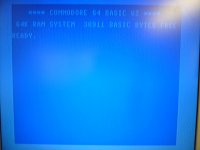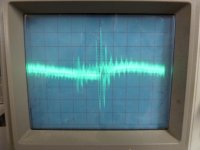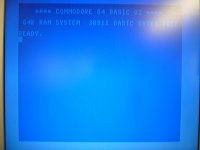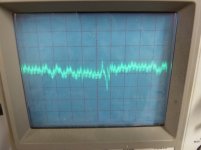KevinO
Experienced Member
I've been working on this project for over a year, and I thought I'd like to share it. I thought I might sell a few on a limited basis, but mostly I wanted to see if it could be done.
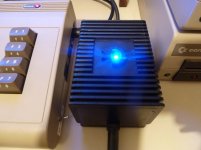
This is an original US Commodore 64 power supply, known as the "brick", and reviled by Commodore users the world over. What makes this different is that it's been gutted and replaced with new parts. I always wanted to try this, and about a year and a half ago I found a 5v 2a switcher that would fit. The switcher is made by Sure Electronics, but I can't find it on their website anymore, which may be an ominous sign. They're still on Ebay from various sellers. The switcher is adjustable, overvoltage protected, short-circuit protected (it shuts down until the short is removed) and fused.
Here's the switcher:
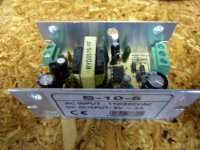
Oh, and here's the insides of what I'm calling the "Re-Brick".
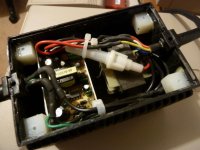
The 9VAC section is a simple wall-wart type transformer, removed from the plastic case and epoxied into the C64 brick case. I've got the 9vac fused at 3a, which seems high, but that's actually what I found in a couple of stock PSs that I took apart.
I wanted it to look like the original C64 brick, but give a hint that it's not stock, so I took the LED that's built onto the switcher and brought it out to the case. I think it looks awesome this way. I built 8 of them total, and three of us tested them thoroughly for a year with no problems. So I decided it would be safe to sell a few at ECCC in Chicago. That's when my education about switcher noise began. We found that on some machines we can see interference patterns running up the screen. This happened on a late model VIC-20, and it seems to happen on any C64 where you use an S-Video adapter cable. I get NO noise on any of my 3 breadbin C64's, either on my 1084, 1701, or when connected via RF on my Samsung LCD TV.
So I still consider it a success, but I've been working on trying to get the noise out, which is a harder task than I thought it would be! Clearly, this is not a replacement for Ray Carlsen's awesome new PS, and we're all holding our collective breath to see what comes out of Jim Brain and Bil Herd's efforts. Also, since my switcher only puts out 2A, it wouldn't be good for a Commodore REU or other power hungry peripheral. I use it with the uIEC all the time though!

This is an original US Commodore 64 power supply, known as the "brick", and reviled by Commodore users the world over. What makes this different is that it's been gutted and replaced with new parts. I always wanted to try this, and about a year and a half ago I found a 5v 2a switcher that would fit. The switcher is made by Sure Electronics, but I can't find it on their website anymore, which may be an ominous sign. They're still on Ebay from various sellers. The switcher is adjustable, overvoltage protected, short-circuit protected (it shuts down until the short is removed) and fused.
Here's the switcher:

Oh, and here's the insides of what I'm calling the "Re-Brick".

The 9VAC section is a simple wall-wart type transformer, removed from the plastic case and epoxied into the C64 brick case. I've got the 9vac fused at 3a, which seems high, but that's actually what I found in a couple of stock PSs that I took apart.
I wanted it to look like the original C64 brick, but give a hint that it's not stock, so I took the LED that's built onto the switcher and brought it out to the case. I think it looks awesome this way. I built 8 of them total, and three of us tested them thoroughly for a year with no problems. So I decided it would be safe to sell a few at ECCC in Chicago. That's when my education about switcher noise began. We found that on some machines we can see interference patterns running up the screen. This happened on a late model VIC-20, and it seems to happen on any C64 where you use an S-Video adapter cable. I get NO noise on any of my 3 breadbin C64's, either on my 1084, 1701, or when connected via RF on my Samsung LCD TV.
So I still consider it a success, but I've been working on trying to get the noise out, which is a harder task than I thought it would be! Clearly, this is not a replacement for Ray Carlsen's awesome new PS, and we're all holding our collective breath to see what comes out of Jim Brain and Bil Herd's efforts. Also, since my switcher only puts out 2A, it wouldn't be good for a Commodore REU or other power hungry peripheral. I use it with the uIEC all the time though!
Last edited:

